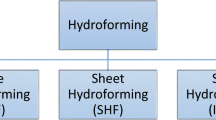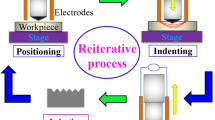Abstract
The interrelationships that exist in the manufacturing processes associated with the surface mount manufacture of printed circuit boards (PCBs) are complex and varied. Proper understanding of the relationships between the variables in a surface mount technology (SMT) process are critical for achieving effective process control and high yields. One aspect of the complex relationship is the selection and dispensing of adhesives for the wave soldering of surface mount components on a PCB.
The quantitative and repeatable dispensing of adhesive dots is critical to providing adequate process control for attaching components including chip resistors, capacitors, and small outline type transistors to the wave solder side of a PCB. Variables that need to be considered include facility temperature, humidity, size and types of components used on the PCB, adhesive properties, type of dispenser used, curing requirements, and the soldering time and temperature,
A knowledge-based approach which considers these relationships is described. Developed in PROLOG, this stand alone adhesive selection advisor is capable of guiding the user in the selection of the proper adhesive and providing dispenser related information. The factors considered include facility temperature, material property requirements, productivity measures including yield, and the process used to dispense the adhesive. The system also functions as a database for adhesive related properties and as an on-line installation and maintenance manual for the adhesive dispenser. Twenty-one different commerically available adhesives and two types of dispensers (air over and positive displacement) have been considered in this research.
Similar content being viewed by others
References
S. R. T. Kumara, R. L. Kashyap and C. L. Moodie, “Application of expert systems and pattern recognition methodologies to facilitate layout planning,”International Journal of Production Research,26 (5), pp. 905–930, 1988.
A. Kusiak, “Artificial intelligence and operations research in flexible manufacturing systems,”Information Systems and Operational Research,25, (1) pp. 2–12, 1987.
E. H. Shortcliffe,Computer Based Medical Consultation: MYCIN, American Elsevier, New York, 1986.
J. McDermott, “R1: a Rule Based Configurer of Computer Systems”,Tech. Rept CMU-C8-80-119, Carnegie Mellon University, Pittsburgh, PA, 1980.
R. O. Duda, J. G. Gashig, P. E. Hart, K. Konolige, R. Reboh, P. Barret and J. Slocum, “Development of the PROSPECTOR consultation system for mineral exploration”,Final Report, SRI Project 5821 and 6415, SRI International Inc., Menlo Park, California, 1978.
L. Alting and H. Zhang, “Computer aided process planning-the state of the art survey”,International Journal Of Production Research,27, (4), pp. 553–585, 1989.
B. K. Ghosh and T. Gupta, “A survey of expert systems in manufacturing and process planning”,Computers In Industry,11, (2), pp. 195–204, 1988.
T. C. Chang and J. Terwilliger, “A rule based system for printed wiring assembly process planning”,International Journal of Production Research,25, (10), pp. 1465–1482, 1987.
C. F. Coombs Jr,Printed Circuits Handbook, McGraw Hill, New York, 1988.
C. Lea,Scientific Guide to Surface Mount Technology, Electrochemical Publications Limited, Scotland, 1985.
K. G. Kempf, “Manufacturing and artificial intelligence”,Robotics,1, (1), pp. 13–25, 1985.
D. W. Rolston,Principles of Artificial Intelligence and Expert Systems Development, McGraw Hill, New York, 1988.
F. Hayes-Roth, D. A. Waterman and D. B. Lenat,Building Expert Systems, Addison Wesley, Massachusetts, 1983.
G. F. Luger and W. A. Stubblefield,Artificial Intelligence and the Design of Expert Systems, Benjamin/Cummings Publishing Company, Redwood City, California, 1989.
S. S. Heragu and A. Kusiak, “Machine layout-an optimization and knowledge based approach”,International Journal of Production Research,28 (4), pp. 615–635, 1990.
G. Abdou and S. P. Dutta, “An integrated approach to facilities layout using expert systems”,International Journal of Production Research,28, (4), pp. 685–708, 1990.
B. Malakooti and A. Tsurushima, “An Expert System for Solving Multiple Criteria Facility Layout Problems”,International Journal of Production Research,27 (5), pp. 793–808, 1989.
G. Westby,Optimized Layout of SMT Production Systems, Universal Instruments Corporation, Binghamton, New York, 1989.
W. F. Clocksin and C. S. Mellish,Programming in PROLOG, Springer Verlag, Berlin, 1984.
R. Komm and D. Warner, “An IBM case study-implementation of expert systems for wave solder”,Proceedings of NEPCON West, Anaheim, California, pp. 677–687, March 1990.
Author information
Authors and Affiliations
Rights and permissions
About this article
Cite this article
Derebail, A., Srihari, K. & Emerson, C.R. An adhesive selection advisor for PCB assembly using surface mount technology. Int J Adv Manuf Technol 9, 93–105 (1994). https://doi.org/10.1007/BF01750416
Issue Date:
DOI: https://doi.org/10.1007/BF01750416




